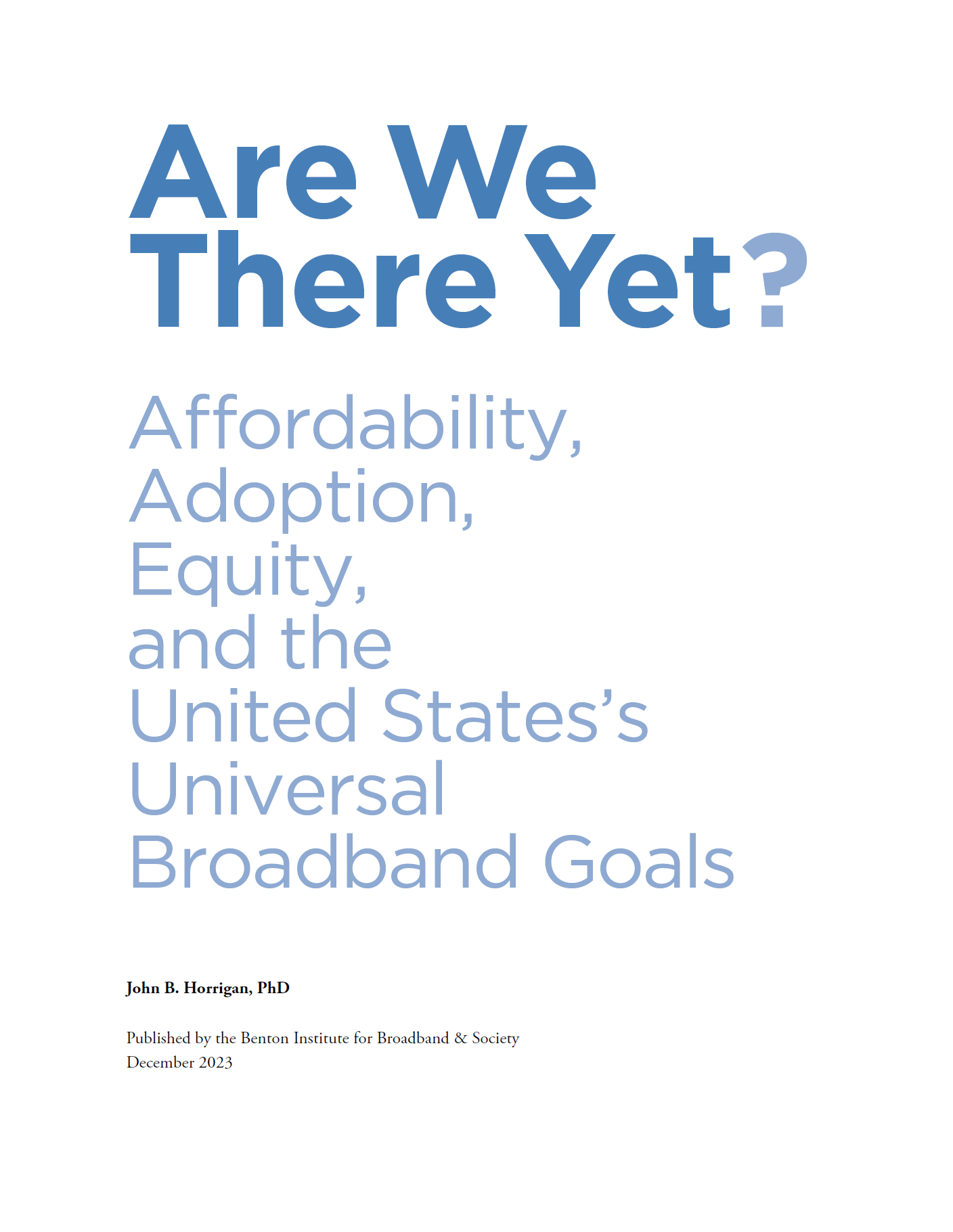John Horrigan

Deployment Alone Does Not Tell the Full Story of the Digital Divide
How should broadband adoption, affordability, and equity impact the Federal Communications Commission (FCC)’s assessment of the availability of broadband for all Americans? A review of recent research indicates that it is not enough for networks to meet just certain deployment benchmarks. Consumer behavior is part of the picture: We cannot reach our universal broadband goals without widespread adoption, and we cannot achieve universal broadband adoption if service is not affordable.
Affordability, Adoption, Equity, and the United States’s Universal Broadband Goals

ACP Uptake is Strongest in Places Where It's Needed Most
Earlier this month, we released an updated version of the Affordable Connectivity Program Enrollment Performance Tool, with data current through October 2023, the most recent dataset the Universal Service Administrative Company (USAC) has posted on ACP enrollment. The downloadable USAC dataset shows that 21.6 million households had enrolled in the program through October 2023.

US Affordable Connectivity Program is Closing the Digital Divide
In the wake of the Biden Administration’s request for a $6 billion extension of the Affordable Connectivity Program (ACP), some in Congress question the program’s true impact on bringing broadband access to new users.
Gain and Sustain: The Affordable Connectivity Program is Getting More People Online
There is a positive and significant correlation between broadband adoption growth and Affordable Connectivity Program (ACP) enrollment. As of December 2022, ACP was aiding one in every eight residential broadband connections in metro and urban counties in the United States, many of them new subscribers. New analysis of the 2022 American Community Survey (ACS) and ACP enrollment data points to important findings as Members of Congress consider additional funding for ACP.
Benton Institute Updates Affordable Connectivity Program Enrollment Performance Tool
“Updated data!” is a phrase that fills the hearts of data nerds everywhere and we’re here to help with an update to our Affordable Connectivity Program Enrollment Performance Tool. The data for the first version of the ACP Tool was current through January 2023, but we’ve fielded questions recently asking about updates. We now release an updated ACP Enrollment Performance Tool with data that runs through April 2023.
The Affordable Connectivity Program and Rural America
Households in rural America are overcoming significant headwinds as they sign up for the Affordable Connectivity Program (ACP) benefit at a higher rate than urban counterparts. Through April 2023, ACP enrollment data shows that: 15% of all rural households have enrolled in ACP and 14% of households in metro or urban areas have enrolled in the benefit. Even this modest difference is striking given the tensions that buffet rural residents as they consider enrolling in ACP.
ACP Enrollment Performance Tool: Understanding Factors that Play a Role in ACP Enrollment
Recently we launched the Benton Institute’s Affordable Connectivity Program Enrollment Performance Tool, a free resource that helps communities answer the question: “How are ACP sign-ups going?” Using the tool to search 5-digit zip codes delivers two important numbers: 1) how many households have signed up for ACP and 2) the expected number of households enrolled. Comparing expected enrollment to actual enrollment is a measure of performance.
The Benton Institute ACP Performance Tool
The Affordable Connectivity Program (ACP) is at an inflection point. Launched in early 2022, ACP provides 17 million households up to $30/month in subsidies to offset the cost of broadband. But the program faces two critical challenges. First, less than a third of eligible households currently participate in the program—mainly because the people who could benefit most from the subsidy are unaware that it exists. The Federal Communications Commission (FCC), local governments, and digital equity groups are stepping up efforts to improve ACP awareness and participation.
Let’s close the digital divide once and for all for Black communities
Since digital technologies first emerged about 30 years ago, Black Americans have trailed in terms of access. This “digital divide” is real, it’s important and we can do better. According to our analysis of data from the American Community Survey, 40 percent of Black Americans do not have high-speed, fixed broadband at home, compared to 28 percent of whites.

